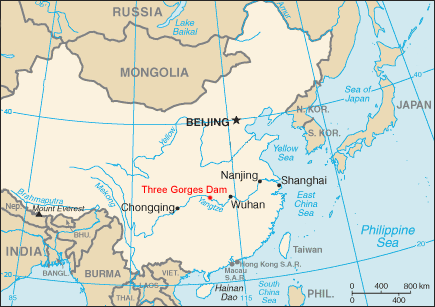Yangtze River: Difference between revisions
Jump to navigation
Jump to search

imported>Caesar Schinas m (Bot: Update image code) |
John Leach (talk | contribs) m (Text replacement - "China" to "China") |
||
| Line 2: | Line 2: | ||
{{Image|Three gorges dam map 2.gif|right|435px|Yangtze River, China.}} | {{Image|Three gorges dam map 2.gif|right|435px|Yangtze River, China.}} | ||
The '''Yangtze River''' <ref>"Yangtze" is the old Postal Map Romanization of the name; pinyin: Yángzi. </ref> (usually called Cháng Jiāng 长江, "long river," in Chinese) is a large river in central | The '''Yangtze River''' <ref>"Yangtze" is the old Postal Map Romanization of the name; pinyin: Yángzi. </ref> (usually called Cháng Jiāng 长江, "long river," in Chinese) is a large river in central China. | ||
It is one of the largest rivers in the world, both by volume of flow and overall length. | It is one of the largest rivers in the world, both by volume of flow and overall length. | ||
Revision as of 09:10, 28 February 2024
The Yangtze River [1] (usually called Cháng Jiāng 长江, "long river," in Chinese) is a large river in central China. It is one of the largest rivers in the world, both by volume of flow and overall length.
The city of Shanghai is on the river's mouth. The river's headwaters are in the Himalaya Mountains.
The lower reaches of the river are deep enough for ocean-going vessels. Considerable river traffic proceeds in the river's upper reaches and tributaries in shallower vessels.
The locks on the main river, such as those on the Three Gorges Dam, are designed to carry vessels of up to 10,000 tons and up to 5 metres in draft.
Notes
- ↑ "Yangtze" is the old Postal Map Romanization of the name; pinyin: Yángzi.
